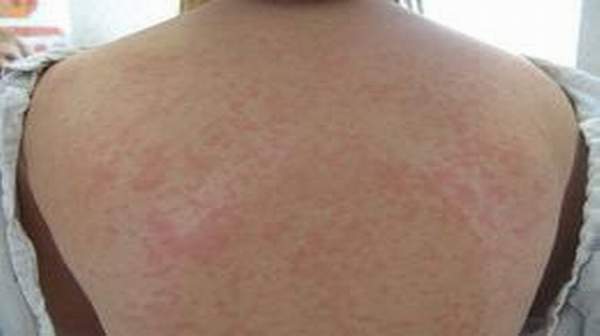What's in this article?
Acute HIV Infection
Within days of HIV-1 acquisition, a transient symptomatic illness associated with high levels of HIV-1 replication and rapid loss of CD4+ T cells occurs. This highly dynamic phase of the infection is accompanied by clinical symptoms similar to mononucleosis. However, despite an estimate of 7,000 new HIV-1 transmissions per day(UNAIDS 2010 Global Report), the diagnosis is missed in the majority of cases. Most commonly other viral illnesses (i.e., flu) are often assumed to be the cause of the symptoms, and there are no HIV-1-specific antibodies detectable at this early stage of infection. The diagnosis therefore requires a high degree of awareness and clinical knowledge based on clinical symptoms and history of exposure, in addition to specific laboratory tests (detection of HIV-1 RNA or p24 antigen and negative HIV-1 antibodies) confirming the diagnosis.
An accurate diagnosis of HIV-1 infection during this early stage of infection is particularly important as about 50% of new sexual transmissions are estimated to happen while a person is in this primary phase of infection (Brenner 2007). Indeed, phylogenetic analyses demonstrate a clustering of infections during primary HIV-1 infection, and the catalytic effect of acute HIV-1 infection on the HIV pandemic could be prevented or at least slowed by early diagnosis and immediate antiretroviral therapy intervention.
What Is Acute HIV Infection?
The amount of HIV in the blood gets very high within a few days or weeks after HIV infection. Some people get a flu-like illness. This first stage of HIV disease is called “acute HIV infection” or “primary HIV infection.”
About half of the people who get infected don’t notice anything. Symptoms generally occur within 2 to 4 weeks. The most common symptoms are fever, fatigue, and rash. Others include headache, swollen lymph glands, sore throat, feeling achy, nausea, vomiting, diarrhea, and night sweats.
It is easy to overlook the signs of acute HIV infection. They can be caused by several different illnesses. If you have any of these symptoms and if there is any chance that you were recently exposed to HIV, talk to your health care provider about getting tested for HIV.
Acute HIV Rash: A Symptom of HIV Infection
When people are first infected with HIV, they may experience an acute, ‘flu-like’ illness called a ‘seroconversion illness,’ about 2-4 weeks after being infected. The HIV rash is a symptom of this condition.
The rash will mostly affect the upper part of the body and will probably be found on the shoulder, chest area (as in the picture below), face, torso and palms of the hands.
Typically the rash will be flat or barely raised with small reddish dots/ spots (resembling eczema) in people with light skin, and dark purple/ black in people with dark skin.
The rash is not usually itchy and it tends to disappear within 3 weeks.
Risk of Infecting Others
The number of HIV particles in the blood is much higher during acute HIV infection than later on. Exposure to the blood of someone in the acute phase of infection is more likely to result in infection than exposure to someone with long-term infection. One research study estimated that the risk of infection is approximately 20 times higher during acute HIV infection.
The risk of passing HIV infection through sexual activity is also much higher during the early stage of acute infection.
HIV Rash During On-Going Infection
During ongoing HIV infection, as your immune system becomes damaged, you may experience red and itchy (pruritic) skin.
You may experience a number of skin conditions including:
- Psoriasis: Scaly lesions on elbows, hands and feet. Pre-existing psoriasis can also be exacerbated by new HIV infections.
- Seborrhoeic dermatitis: Occurs on the scalp, ears, eyebrows, chest axillae, groin and feet.
- Eosinophilic pustular folliculitis: Acne or pimples may appear around hair follicles on the upper arms and chest.
In addition to this, you may notice blisters in the ‘moist’ areas of the body such as the mouth, genitals and eyes.
Treating Acute HIV Infection
At first, the immune system produces white blood cells that recognize and kill HIV-infected cells. This is called an “HIV-specific response.” Over time, most people lose this response. Unless they use antiretroviral drugs (ARVs), their HIV disease will progress.
United States guidelines for using HIV medications recommend treatment for all persons living with HIV. Starting ARVs during acute HIV infection might protect the HIV-specific immune response.
Researchers have studied people who start treatment during acute infection and then stop taking ARVs. One study showed that this treatment may delay the time until immune system damage.
Rashes Due to HIV Medication
HIV rashes often appear as either a side-effect of, or an allergic reaction to certain antiretroviral medication.
- NNRTI medication: Causes the majority of skin rashes, with nevirapine rashes being the most severe. Women are at a particular risk of developing nevirapine rashes.
- NRTI medication: Abacavir may causes severe allergic reaction rashes in some people. If you develop a rash while taking Ziagen, notify your doctor straight away.
- PI medication: Amprenavir and tipranavir have both been known to cause rashes. Women taking birth control pills containing oestrogen are particularly at risk of developing a rash.








